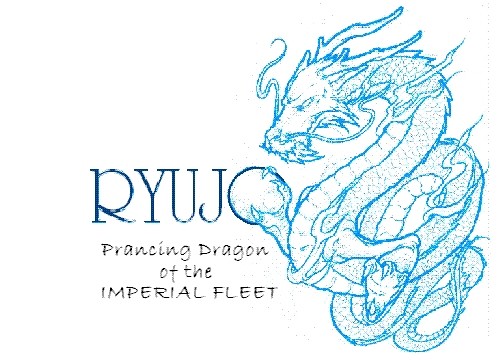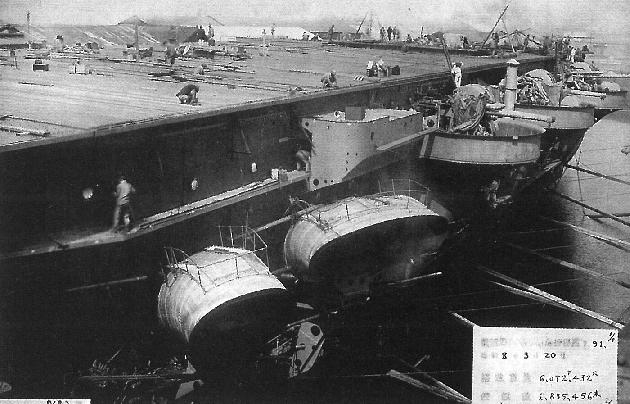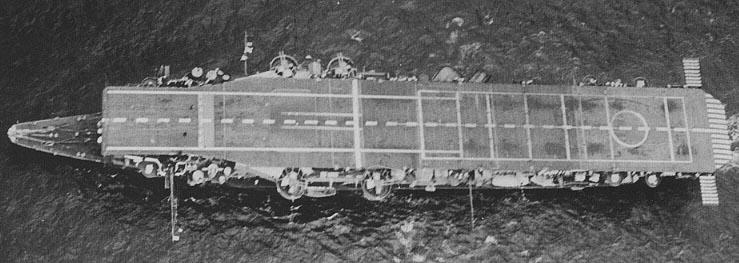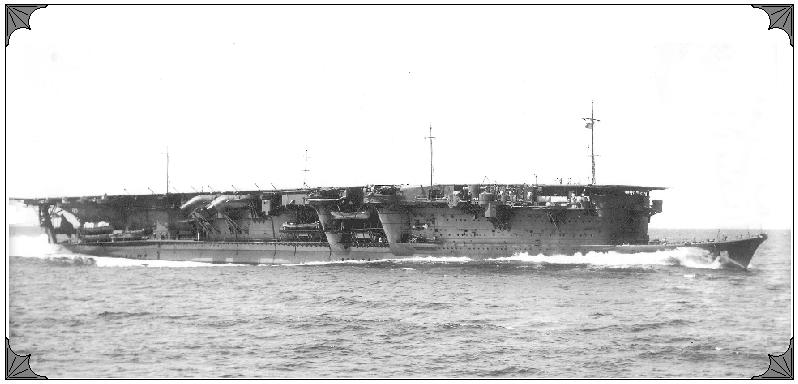
Imperial Japanese Navy - RYUJO Aircraft Carrier ==========================================================================
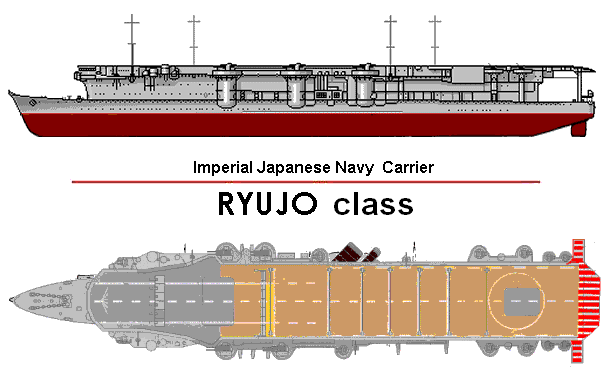
Ryujo ("prancing dragon") was a light aircraft carrier of the Imperial Japanese Navy. She was laid down by Mitsubishi at Yokohama in 1929, launched in 1931 and commissioned in 1933. Her small design - when launched she displaced only 8,000 tons - proved to be incapable of safe operation in heavy seas. Nonetheless, she was employed in operations in the Second Sino-Japanese War. Her construction was unique in that her forecastle was built within the hangar structure, giving her a clean and streamlined look.
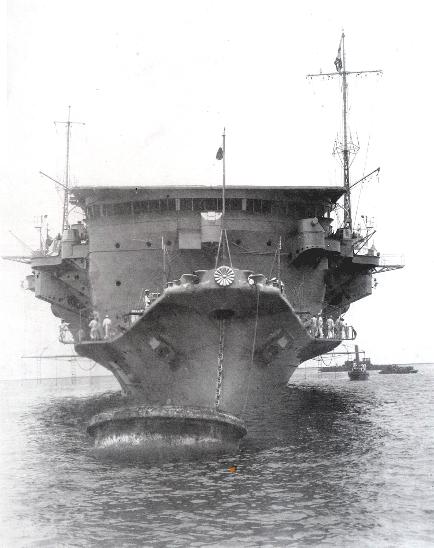
Ryujo was an odd-looking ship, to say the least, with her bridge running across the breadth of the hanger deck forward, and her distinctive undulating sheer line. She was actually a rather handy little carrier, and managed to carry 30+ aircraft on a pretty small displacement. The Japanese undoubtedly found her very useful in the early portions of the war for supplying air cover for various amphibious operations. She was lost during the Battle of the Eastern Solomons on August 24, 1942.
Ryujo was originally planned as a seaplane tender to replace the aging Wakamiya, but the plan was later changed to a conventional aircraft carrier of around 9,800-ton standard displacement. This very light displacement was intended to exploit a loophole in the Washington Naval Treaty of 1922: Under the Treaty, Japan's total tonnage of aircraft carriers was limited to 81,000 tons, but aircraft carriers under 10,000-ton standard displacement were not regarded as "aircraft carriers" by the Treaty.
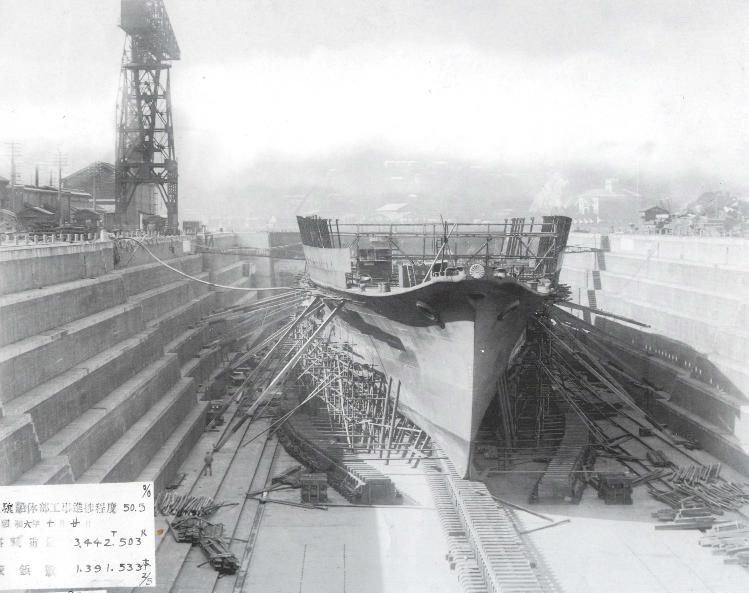
In 1931, a replenishment plan was authorized, permitting the Navy to complete construction of the Ryujo, a small aircraft carrier of about 10,000 tons laid down in 1929 at Yokohama. She was completed in 1933, her limited deck, only 513 1/2 feet long and 75 1/2 feet wide, was free of an obstructive island. The Ryujo had a speed of 29 knots, carried 36 aircraft, and was armed with 12 five-inch guns.
While Ryujo was under construction in 1930, the London Naval Treaty finally closed the abovementioned loophole in the Washington Naval Treaty; consequently Ryujo was the only light aircraft carrier of her type to be completed by Japan.
She was Japan’s fourth aircraft carrier.
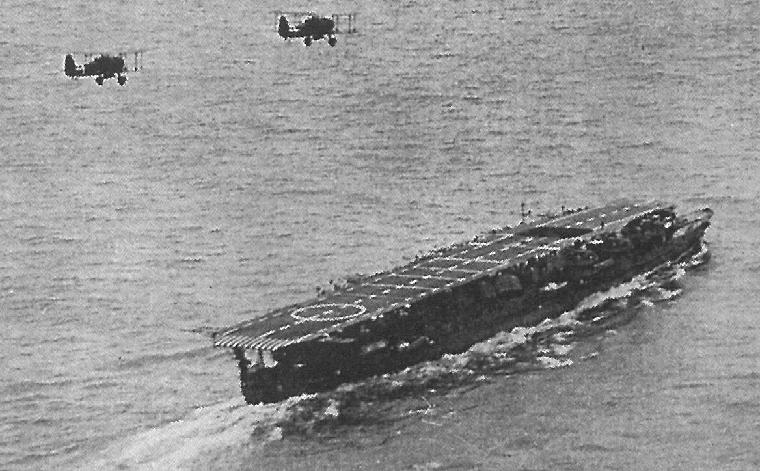
The original design of the Ryujo called for one hangar, but a second hangar was added to increase her number of aircraft. This addition was done without increasing the size of the ship and as a result, the Ryujo was often unstable and overloaded. Soon afterwards, the Japanese Navy discovered that an entire generation of warships, designed to squeeze a great deal of fighting power into hulls of limited size, were incapable of safe operation in the open ocean. The Ryujo was one of these.
The light displacement of Ryujo made her unstable in rough seas (a common flaw amongst many treaty-circumventing Japanese warships of her generation). In the late 1930s she was extensively modified to improve her seakeeping and increase her aircraft capacity. Though very small for her intended fleet carrier duties, she was actively employed during the war against China later in the decade.
In August–December 1937, Ryujo supported land operations of the Japanese Army in China, as flagship of Carrier Division 1. Her aircraft complement consisted of 12 Nakajima A4N fighters and 15 Aichi D1A dive bombers
After her less than satisfactory performance there, Ryujo received extensive reconstruction. The ship was modified in 1940, when her low forecastle was built up one deck to improve seakeeping and make her less wet.
In World War II, Ryujo was commanded by Captain Kato Tadao and was the flagship of Carrier Division 4. Her reconstruction proved successful and the performance of her air group, as well as the ship herself in high seas, was satisfactory.
When the new, large fleet carriers Shokaku and Zuikaku joined the Japanese fleet, Ryujo was relegated to secondary tasks. She was constructed as a fleet carrier, but her relative small size prevented her from being used effectively as one, so her role was relegated to a supporting one, working alongside of the other larger and more modern fleet carriers.
During the Pacific War's first weeks in December 1941, she supported the effort to capture the Philippines. In February 1942, the carrier participated in the conquest of the East Indies and, in early April 1942, as part of the Indian Ocean raid, Ryujo attacked shipping in the Bay of Bengal. Together with the cruisers Chokai, Kumano, Suzuya, Mogami, Mikuma, Yura, and four destroyers, she sank 23 merchant ships.
In June 1942 Ryujo was part of the Northern Force that attacked the Aleutian Islands. Ryujo's planes struck Dutch Harbor on Unalaska Island on 3 June and 4 June 1942. The strike on the Aleutian Islands is often seen as a diversion for Battle of Midway, but recent publications by historians Jonathan Parshall and Anthony Tully had made strong arguments that Operation AL was meant to be a concurrent operation instead of merely a diversion. During this operation, one of the Mitsubishi A6M Zero fighters from the Ryujo, flown by Petty Officer Tadahito Koga, crashlanded on the island of Akutan. Koga was killed in the crash due to a broken neck, but the aircraft remained largely intact. This was the first Zero to fall into the hands of U.S. military intelligence.
The sinking of four of Japan's six fleet carriers in the Battle of Midway made Ryujo much more important to the Japanese Navy.
In August 1942 she was reassigned to Carrier Division 2, and with Shokaku and Zuikaku she was dispatched to the Solomon Islands. Ryujo's role in the operation was to support a convoy of transports that were to reinforce and resupply Japanese troops on Guadalcanal, and to attack the Allied air base at Henderson Field, while the fleet carriers operated against the U.S. Navy's aircraft carriers. This operation resulted in the Battle of the Eastern Solomons.
A few weeks after the 7 August 1942 Allied invasion of the southern Solomon Islands, the Japanese sent a convoy of transports to reinforce their beleaguered troops on Guadalcanal. Ryujo was to cover the convoy and send planes to attack the American airfield on the island, while the larger Japanese carriers operated separately against the U.S. Navy's aircraft carriers. Thus, in the 24 August Battle of the Eastern Solomons, Ryujo, isolated from other sources of air support and with most of her planes launched on two strike missions on Guadalcanal, was overwhelmed by a powerful air assault from USS Saratoga.
At 13:57 she was attacked by dive bombers and torpedo bombers from the USS Saratoga, and despite effective maneuvering, was hit by several bombs (sources differ as to how many) and one torpedo. The torpedo hit flooded the starboard engine room and Ryujo began to list. At 15:15 the order to abandon ship was given. At 18:00 she capsized and sank. One hundred twenty of the crew were killed. The surviving crewmembers, including Captain Kato, were taken off by her escorts, the flagship cruiser Tone and destroyers Amatsukaze and Tokitsukaze; her aircraft were sent to Buka Island. At 20:00 that day she sank under the waves. Only one American aircraft was lost during the attack on her.
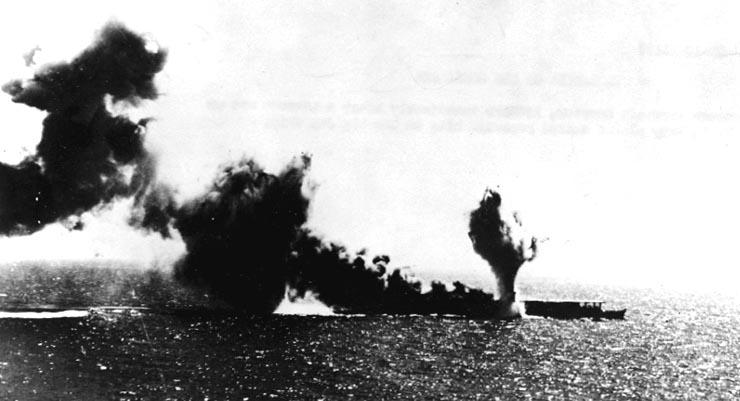
As an interesting note, in the afternoon, after Ryujo had been disabled by USS Saratoga's dive bombers and torpedo planes and while her crew was abandoning ship, she was the target of Army Air Force B-17 bombers. These bomb runs, well-photographed but little noticed by historians, missed the immobile aircraft carrier by wide margins, reinforcing the evidence already obtained during the Battle of Midway that high-level bombing was a very ineffective way of attacking ships.
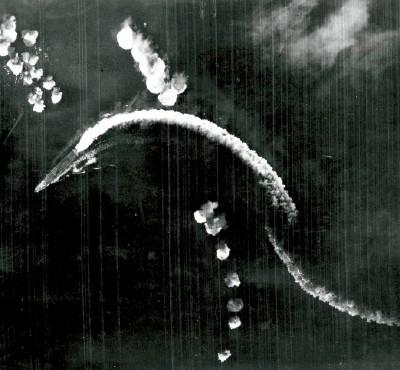
=================================================================================
NB: The above text has been collected / excerpted / edited / mangled / tangled / re-compiled / etc ... from the following online sources :
Japanese aircraft carrier Ryujo - wikipedia article
Aircraft Carrier Ryujo - www.combinedfleet.com
Ryujo Light Aircraft Carrier - www.globalsecurity.org
Carrier Ryujo - ww2db.com
Ryujo (Aircraft Carrier, 1933-1942) - www.history.navy.mil
